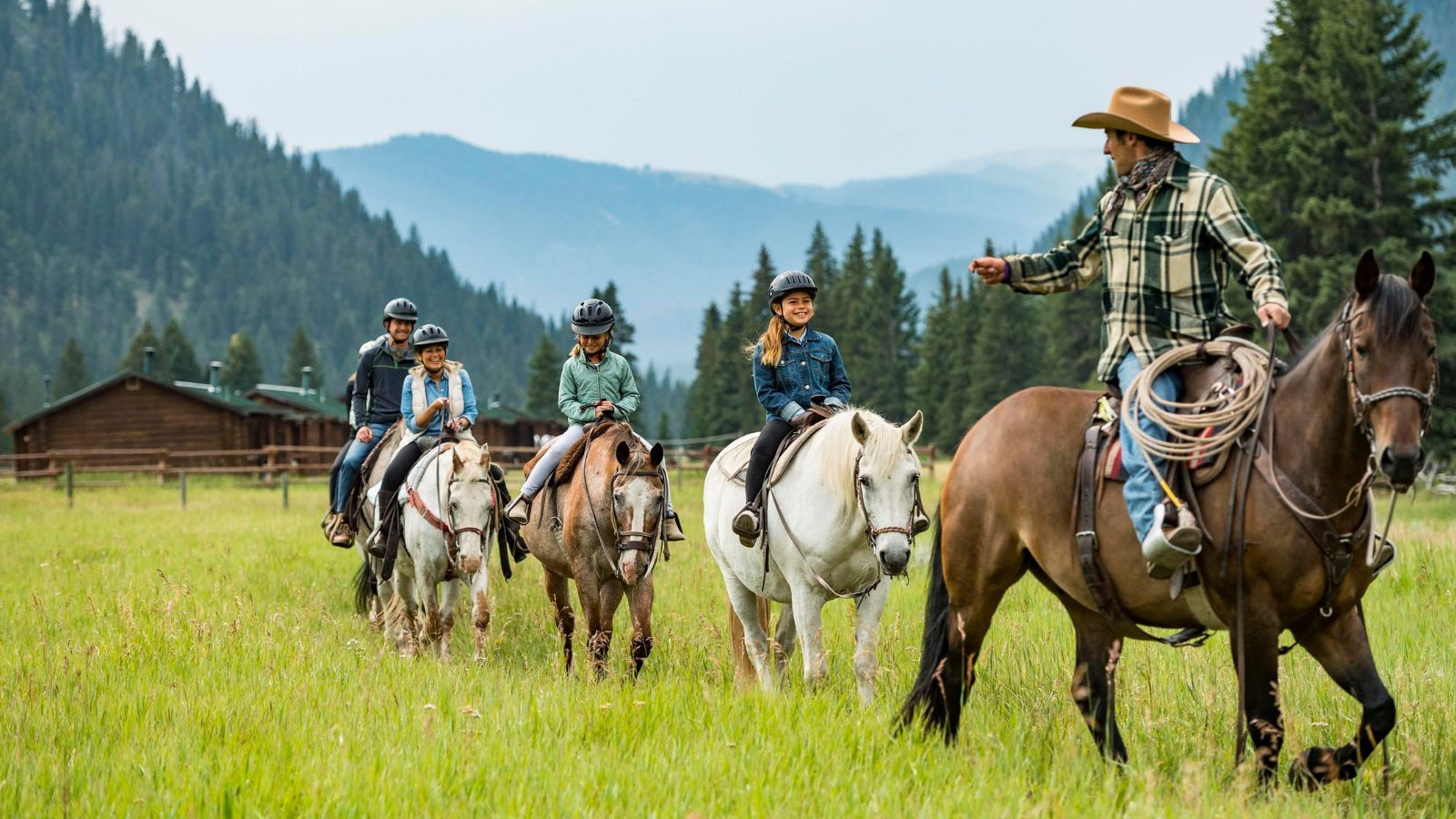Guided tours for seniors offer a unique opportunity to explore the world while catering to specific needs and preferences. This guide delves into the planning, execution, and marketing of enriching travel experiences designed for older adults, addressing accessibility, safety, and engagement. We’ll explore various tour types, from leisurely walking excursions to fully accessible bus tours, ensuring a comfortable and memorable journey for every senior traveler.
We’ll cover crucial aspects like designing itineraries that prioritize comfort and safety, crafting engaging narratives tailored to different cognitive abilities, and implementing effective marketing strategies to reach the senior demographic. Ultimately, the goal is to create unforgettable travel experiences that enhance the lives of older adults.
Accessibility and Safety Considerations
Planning tours specifically for seniors requires careful consideration of accessibility and safety to ensure a positive and enjoyable experience for all participants. Failing to address these aspects can lead to exclusion, discomfort, and even potential harm. This section outlines key considerations and best practices to mitigate risks and promote inclusivity.
Accessibility features are paramount in tour planning for older adults. Many seniors may have mobility limitations, visual or auditory impairments, or other health conditions that can impact their ability to fully participate. Ignoring these needs can create barriers to participation and significantly diminish the overall experience.
Accessibility Checklist for Tour Operators
A comprehensive checklist helps ensure that tours are genuinely accessible. This checklist should be reviewed and adapted for each specific tour based on the location and planned activities.
- Transportation: Does the transportation offer wheelchair access, ample space for walkers, and easy boarding/disembarking? Are there designated seating areas for those with mobility challenges?
- Venues: Are all venues wheelchair accessible, with ramps, elevators, and accessible restrooms? Are there clear signage with large, easy-to-read fonts?
- Activities: Are activities adaptable to varying levels of physical ability? Are there alternative options available for those who cannot participate in certain activities? Are there rest stops planned throughout the day?
- Communication: Is information provided in multiple formats (e.g., large print, audio)? Are tour guides trained to communicate clearly and patiently, accommodating hearing impairments?
- Emergency Preparedness: Is there a clear emergency plan in place, including readily available medical kits and contact information for emergency services?
Best Practices for Ensuring Safety and Well-being
Prioritizing the safety and well-being of senior participants is crucial for a successful tour. Proactive measures can prevent many potential issues.
- Pre-Tour Health Check: Encourage participants to disclose any pre-existing health conditions or medications. This information can inform tour planning and emergency preparedness.
- Pace and Rest Breaks: Maintain a moderate pace with frequent rest breaks to prevent fatigue and overexertion. Schedule these breaks in shaded or air-conditioned areas.
- Hydration and Nutrition: Provide access to water and healthy snacks throughout the day to maintain energy levels and prevent dehydration, particularly in warm weather.
- Supervision and Assistance: Provide adequate supervision, especially during activities with potential risks. Ensure there are staff members available to assist participants with mobility challenges.
- Emergency Contact Information: Collect emergency contact information for each participant and ensure it’s readily accessible to tour staff.
- First Aid Training: Ensure at least one tour staff member is trained in basic first aid and CPR.
Managing Potential Health Emergencies
While preventative measures are crucial, it’s essential to have a plan for managing potential health emergencies. A swift and effective response can significantly improve outcomes.
- Emergency Response Plan: Develop a detailed emergency response plan that includes procedures for contacting emergency services, administering first aid, and evacuating participants if necessary.
- Designated Emergency Contact Person: Identify a designated person responsible for coordinating emergency responses and communicating with participants’ families or guardians.
- Medical Kits and Equipment: Carry comprehensive first-aid kits with necessary medications and equipment (e.g., oxygen, defibrillator, if appropriate).
- Transportation Arrangements: Have pre-arranged transportation to the nearest medical facility in case of a serious emergency.
- Communication Protocol: Establish clear communication protocols to keep participants, families, and emergency services informed during an emergency.
Marketing and Promotion
Reaching the senior travel market requires a targeted approach that understands their needs and preferences. Effective marketing will highlight the accessibility, safety, and enriching experiences offered by our guided tours, resonating with their desire for comfortable and fulfilling travel.
Marketing strategies should leverage multiple channels to maximize reach and engagement with this demographic. We need to create compelling messaging that speaks directly to the concerns and aspirations of senior travelers, focusing on the value and peace of mind our tours provide.
Marketing Channels and Messaging
Our marketing strategy will utilize a multi-channel approach, combining traditional and digital methods to reach a broad spectrum of senior travelers. Print media, including targeted advertisements in senior-focused publications and community newsletters, will provide a tangible and trustworthy platform. Online advertising will focus on search engine optimization (SEO) targeting relevant keywords, and paid advertising on websites and platforms frequented by seniors. Social media, particularly Facebook and Instagram, will be used to share visually appealing content showcasing the tour experiences and build a community around our brand. The messaging will emphasize the ease, comfort, and enriching experiences offered, directly addressing potential concerns about physical limitations or travel anxieties. For instance, advertisements might feature testimonials from satisfied senior travelers or highlight the accessibility features of our tours.
Examples of Compelling Marketing Materials
A brochure designed for senior travelers would feature large, clear fonts, high-quality photographs depicting seniors enjoying the tours, and concise, easily digestible information. The layout would be uncluttered and visually appealing, with ample white space to avoid overwhelming the reader. It would emphasize accessibility features such as accessible transportation and accommodation options. The brochure would also include a clear call to action, such as a website URL or phone number. Our website would feature a clean, user-friendly design with large fonts and high-contrast colors for improved readability. It would include detailed tour itineraries, high-resolution photos and videos showcasing the destinations and experiences, and testimonials from past participants. Furthermore, a dedicated FAQ section would address common concerns among senior travelers, such as accessibility, health and safety measures, and trip insurance.
Key Selling Points for Senior Travelers
Before presenting the key selling points, it is important to remember that the senior demographic values security, comfort, and enriching experiences. Our marketing should directly address these values.
- Accessible Travel: Highlighting features such as accessible transportation, accommodations, and activities ensures comfort and ease of travel for seniors with mobility challenges.
- Safety and Security: Emphasize the presence of experienced guides, well-planned itineraries, and comprehensive safety measures, providing peace of mind for travelers and their families.
- Engaging Experiences: Showcase enriching cultural experiences, historical sites, and opportunities for social interaction, catering to the intellectual and social needs of senior travelers.
- Convenient and Comfortable Travel Arrangements: Detailing hassle-free booking processes, comfortable transportation, and well-chosen accommodations that meet the needs of seniors.
- Value for Money: Clearly presenting the all-inclusive nature of the tours and highlighting the value provided by inclusive pricing and experiences.
Customer Service and Feedback
Providing exceptional customer service is paramount for ensuring a positive experience for senior travelers. Our goal is to create memorable and enjoyable tours, and this begins with anticipating and addressing the unique needs of our older clientele. A proactive and empathetic approach will foster loyalty and encourage positive word-of-mouth referrals.
Excellent Customer Service Practices for Senior Travelers
Understanding the specific needs of senior travelers is crucial to providing excellent service. This includes acknowledging potential physical limitations, offering personalized assistance, and creating a comfortable and supportive environment.
- Pre-Tour Communication: Detailed pre-tour information packets should be provided well in advance, including clear instructions, large print materials, and contact information for immediate assistance. These packets could include a visual itinerary with large fonts and clear images of key locations and landmarks.
- Accessible Transportation: Ensure comfortable and accessible transportation is provided throughout the tour. This could involve using vehicles with ample space for wheelchairs or walkers, or offering assistance with boarding and disembarking. Consider providing step-free access to all tour sites and vehicles.
- Pace and Rest Stops: Tours should be planned with frequent rest stops and a manageable pace to accommodate varying levels of physical endurance. The itinerary should clearly indicate rest periods and allow for flexibility based on the group’s needs.
- Personalized Attention: Tour guides should be trained to provide individualized attention and assistance to each participant. This includes offering help with luggage, navigating uneven terrain, and answering questions patiently and thoroughly. Guides should be attentive to any signs of fatigue or discomfort and offer appropriate support.
- Clear and Concise Communication: Communication should be clear, concise, and easy to understand, using simple language and avoiding jargon. Visual aids and written materials should supplement verbal communication.
Gathering and Analyzing Feedback from Senior Tour Participants
Collecting and analyzing feedback is vital for continuous improvement. Multiple methods should be employed to capture a wide range of perspectives and experiences.
- Post-Tour Surveys: A simple, easy-to-complete survey should be distributed at the end of the tour, either digitally or in print with large font sizes. This survey should focus on key aspects of the tour, such as transportation, accommodations, activities, and overall satisfaction.
- Informal Feedback Sessions: Conduct informal feedback sessions during or after the tour, allowing participants to share their experiences in a relaxed setting. This can be a valuable opportunity to address immediate concerns and gather qualitative data.
- Focus Groups: Organize smaller focus groups with selected participants to delve deeper into specific aspects of the tour experience. These groups can provide valuable insights and suggestions for future improvements.
Example Feedback Form
| Aspect of the Tour | Rating (1-5, 1 being poor, 5 being excellent) | Comments |
|---|---|---|
| Transportation | ||
| Accommodation | ||
| Activities | ||
| Tour Guide | ||
| Overall Satisfaction | ||
| Suggestions for Improvement |
Addressing Complaints and Concerns
Prompt and effective complaint resolution is essential for maintaining positive client relationships. A well-defined process for handling complaints ensures that issues are addressed fairly and efficiently.
- Acknowledge and Validate: Immediately acknowledge the complaint and validate the client’s feelings. Let them know you understand their concerns and are taking them seriously.
- Listen Empathetically: Actively listen to the client’s concerns without interrupting. Show empathy and understanding, even if you don’t agree with their perspective.
- Offer a Solution: Propose a solution that addresses the client’s concerns and aims to rectify the situation. This might involve offering a refund, discount on a future tour, or other appropriate compensation.
- Follow Up: Follow up with the client to ensure they are satisfied with the resolution. This demonstrates your commitment to customer satisfaction and helps build trust.
Final Review
Creating exceptional guided tours for seniors requires careful consideration of various factors, from accessibility and safety to engagement and marketing. By understanding the unique needs and preferences of this demographic, tour operators can craft unforgettable experiences that promote well-being, social interaction, and exploration. The investment in thoughtful planning and execution translates to enriching travel opportunities for seniors, fostering independence, joy, and a deeper connection with the world around them. This comprehensive guide provides a roadmap for building successful and fulfilling senior travel programs.




